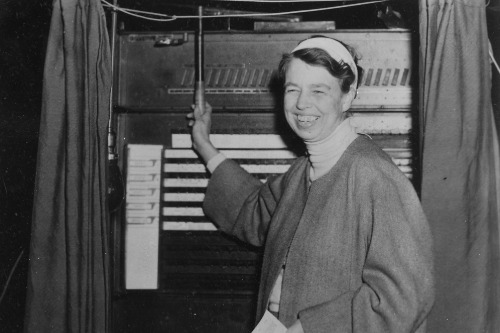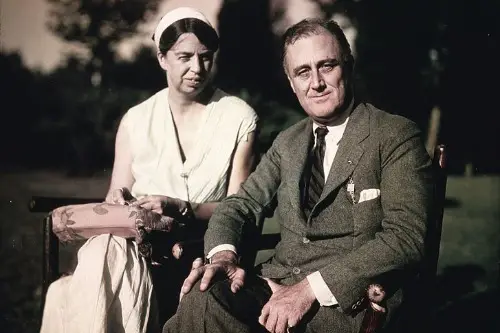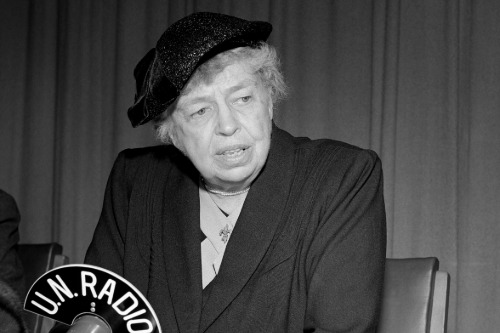The Early Struggles: From Shy Daughter to Public Figure

Eleanor Roosevelt’s story didn’t start with the grand titles of “First Lady” or “Champion of Human Rights.” In fact, it began with a shy and awkward young girl who was often overshadowed by the brilliance and beauty of her family members. Born on October 11, 1884, in New York City, Eleanor was the daughter of socialite Anna Hall and Theodore Roosevelt’s brother, Elliott. But even in such a prominent family, she struggled with feelings of inadequacy.
Her early life was marked by hardship. Both her parents died when she was young, and she was left to cope with not only the loss of her family but also her own insecurities. Eleanor’s mother, who was a beautiful, social figure, had little patience for Eleanor’s quiet, less outgoing nature. As a result, Eleanor grew up feeling overlooked and unattractive.
But as she got older, something shifted. Instead of retreating into a shell, she began to reshape her self-image. She went off to England for school, where she found her voice. Eleanor, a person once uncertain of herself, started to flourish, particularly when she met her future husband, Franklin D. Roosevelt. Their relationship, built on mutual respect and admiration, would eventually become a cornerstone of her work.
When Franklin was elected president in 1932, Eleanor was thrust into the role of First Lady. But instead of simply playing the traditional supportive wife, Eleanor quickly made it clear that she would take a much more active, even pioneering role. She used her new position not just to stand beside her husband but to stand up for people, issues, and causes that had been largely ignored or marginalized by society.
A New Kind of Power: Using the Spotlight for Change

What truly set Eleanor Roosevelt apart as First Lady was her ability to redefine what it meant to wield power. Most people in her position would have been content to play the role of gracious hostess or supportive spouse. But Eleanor saw the First Ladyship as an opportunity to influence change in ways that were far from traditional.
One of the most striking things about Eleanor was how she turned her public platform into a tool for activism. During her time in the White House, she was a tireless advocate for civil rights, women’s rights, and the rights of workers. In fact, she became one of the most visible public figures advocating for racial equality during the 1930s and 1940s.
She didn’t shy away from addressing uncomfortable issues. One of her most courageous actions came in 1939, when she resigned from the Daughters of the American Revolution (DAR) after they refused to let the African American singer Marian Anderson perform at their hall. Instead of quietly stepping aside, Eleanor took bold action: she invited Anderson to perform at the Lincoln Memorial. The concert, which was attended by 75,000 people, sent a powerful message about racial inequality and Eleanor’s commitment to fighting it.
But Eleanor didn’t just support civil rights from a distance; she was actively involved in policy discussions. She worked closely with Franklin on New Deal programs, advocating for better labor laws, unemployment insurance, and financial reforms that would help the most vulnerable in society. At a time when women’s roles were still largely confined to the domestic sphere, Eleanor showed the world that women could, and should, be leaders in their own right.
What made her approach to power so unique was that she never sought to dominate. She didn’t try to overshadow Franklin’s presidency; instead, she used her position to empower others. She was a staunch advocate for those who had no voice, and her leadership was grounded in a sense of compassion, empathy, and moral clarity. Eleanor’s influence didn’t come from control or authority, but from the deep respect she had for the dignity of every human being.
A Legacy of Advocacy: Eleanor Roosevelt After the White House

Eleanor Roosevelt’s legacy didn’t end with her husband’s presidency. In fact, she continued to reshape the concept of power in the years after Franklin’s death in 1945. She understood that true influence wasn’t about titles or fame—it was about using one’s platform to bring attention to the world’s most pressing issues.
After leaving the White House, Eleanor continued her work as a global advocate. She became a key figure in the creation of the United Nations and helped draft the Universal Declaration of Human Rights. Her work on behalf of the United Nations was groundbreaking, as she became the first chairperson of the UN Commission on Human Rights. She used this role to champion a global vision of peace, equality, and human dignity, taking on international issues with the same fervor that marked her domestic activism.
One of her most lasting contributions came from her ability to connect with people from all walks of life. As First Lady, she was famous for her “listening tours,” where she traveled across the country, meeting with ordinary citizens and understanding their struggles. She didn’t just deliver speeches from the comfort of the White House; she engaged with people face-to-face, asking questions, offering support, and most importantly, listening.
Her ability to connect with people extended beyond the U.S. borders. Eleanor’s work on the global stage, especially her tireless efforts at the United Nations, solidified her as a global leader. While she often worked behind the scenes, she was never out of the spotlight when it came to speaking out for the oppressed or advocating for humanitarian causes.
Perhaps the most remarkable thing about Eleanor Roosevelt was her ability to stay true to her values, no matter the challenges. Even in her later years, as she faced criticism and the loss of her beloved husband, she remained resolute. She faced personal loss and public skepticism, but she never wavered in her commitment to justice. Her courage to speak out on behalf of marginalized communities, from racial minorities to refugees, was a beacon for those who believed in the power of compassion.
By the time Eleanor passed away in 1962, her influence had reached far beyond the realm of politics. She was seen not just as a political figure, but as a symbol of empowerment and hope. Her legacy is evident in every human rights initiative, every women’s movement, and every campaign for racial equality that followed in her wake.
Eleanor’s Redefinition of Power: A Lesson for Today
Eleanor Roosevelt showed us that power isn’t about authority, wealth, or control; it’s about influence, empathy, and action. Her work proved that power could be used to uplift others, to challenge injustice, and to reshape societal norms. She didn’t just occupy space—she filled it with purpose and heart.
Today, as we look around at the current landscape of politics, activism, and leadership, Eleanor’s life offers a blueprint for those who wish to lead with authenticity and integrity. In an era where many people still struggle to find their voice or assert their influence, Eleanor’s example teaches us that true leadership comes from a place of service. Her approach to power wasn’t about making herself the center of attention—it was about bringing others together for the greater good.
Eleanor Roosevelt was not just a First Lady; she was a pioneer, a global leader, and a tireless advocate for human dignity. And in the process, she completely redefined what it means to hold power. Her legacy reminds us that real power lies not in the titles we hold, but in the actions we take to make the world a better place for everyone.
